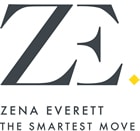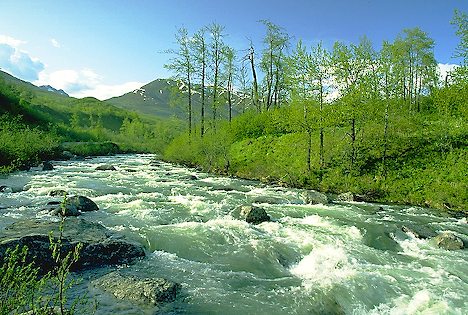In a ten-year study conducted by McKinsey, executives reported that they were five times more productive when they worked in a state of optimal concentration called flow. As author Steven Kotler points out, that means they could get as much done by the end of Monday than their steady-state peers did in a whole week. Is a full day in flow a leap too far? The same McKinsey researchers said that if we could all just increase the time we spend in flow by 15 – 20%, overall workplace productivity would almost double. Think about the difference that would make to your business.
What is flow and how do we achieve it?
The mental state of flow was named by Hungarian psychologist Mihaly Csikszentmihalyi to describe the feeling of total immersion or concentration in a task. It’s when you are lost in what you do, ignoring all distractions and feeling totally focused and energized. Csikszentmihalyi was fascinated by how some artists became absorbed in their work. They lost their sense of time, appetite, even a sense of their own ego. He researched these optimal experiences and called this state ‘flow’, using the metaphor of water carrying people along. To observe flow watch top sports people intensely concentrating, when nothing else matters to them. Flow has been described as blissful: our emotions are channeled into performing a task and we are positively absorbed in thinking and learning.
People who successfully master the flow state report powerful personal breakthroughs including earning more, working less hours and feeling aligned with their life purpose.
People who don’t find flow experience work as merely a necessary evil. Roman Krznaric at the School of Life says that flow is one of three vital components for work to be truly fulfilling The others are freedom (over your time and labour) and meaning: finding value in what you do. You could argue that the ways to create a flow state also contribute to this sense of freedom and meaning so it is the most important component of the three.
So how can we tap into this joy? How should managers set up the right conditions for their staff to both enjoy their work and perform at their peak through flow.
In Csikszentmihalyi’s model of flow ‘skills’ are along the x axis and ‘challenges faced’ are along the y. When we can steer our tasks along the x = y diagonal channel, the challenges we face match our perception of our skills. We achieve our flow state. If the task becomes too great for us however, we feel worried and anxious. If the challenges aren’t great enough, we become bored. Derren Brown, in his fascinating new book on the philosophy of happiness, calls boredom and pain – anxiety in this case – the twin enemies of being happy. In a work context these are also the enemies of performance. By moving up the flow channel to the right hand corner we develop our skills, take on greater challenges and increase our value and productivity.
Tips for getting in and staying in flow:
- Have a realistic sense of your skillset so you can consciously choose the right task. You need to identify a healthy challenge, based on previous successes and failures. If your work is allocated to you, then make your skills and aspirations clear.
- If you are feeling demotivated or stuck it could be because you are working below your skill level. Staying roughly in your skill comfort zone is fine, but you need to be learning something new to be in the mental zone of flow. Delegate the easy stuff to someone who is developing their skills in that area, they will usually thank you for it. Take a risk with something more challenging. If you are managing an underperforming team check to see if they have outgrown their job descriptions.
- Get your environment right, move location if you need to. You might find it harder to concentrate on something meaningful in the same place you do routine chores.
- Don’t expect flow to hit straight away. Studies show that it can take between five to twenty minutes to kick in. Increase your tolerance levels to put up with the frustration of getting going. Schedule a time to start and well, start.
- Kill potential distractions and interruptions – block the time out in your diary and switch off your phone, social media and email.
- Remove the unhelpful emotions that get in the way also. Achieving flow involves a realistic perception of your skillset. You will cloud this perception with thoughts like ‘I can’t do this, it will be rubbish, someone else could do this better, what’s the point anyway, etc’. You could of course be right, but these limiting assumptions stop you from giving it your best shot, or asking for support when you need help. Work with a Coach to shift those unhelpful beliefs for good.
- Know where you are on the task. Csikszentmihalyi says you stay focused and engaged by the constant awareness of what is next. Make a plan and tick off where you have got up to.
- Take short breaks and make sure you aren’t dehydrated. Train yourself to drop back into the flow state quickly when you start work again and steer clear of other tasks that could interrupt your concentration.
- Don’t expect to have a week of flow experiences. Increase the time you schedule to work in flow, working on the important areas that will have the most impact. Measure the increase in productivity and achievements. Rewrite your objectives to reflect your increased aspirations.
- Finally, getting lost on Facebook isn’t flow because there is no challenge and you aren’t learning. Activities like facebooking keep you at the bottom left hand corner of the model, called the apathy zone. The intense concentration that comes when you play video games isn’t flow either – it is hyperfocus, which leaves you in a wound-up, aggressive state, not a happy flow one. Too much time in either of these zones makes it harder to shift to the optimal concentration you need to be super effective. Try explaining that to your kids!
As ever, I hope that’s useful; I love getting your feedback and blog ideas so please keep them coming. Feel free to share this with your network too. If you want to increase your own or your team’s confidence, performance and effectiveness, then call me.
Sources:
Mihaly Csikszentmihalyi (2008), Flow: The Psychology of Optimal Experience.
Stephen Kotler (2014) The Rise of Superman: Decoding the Science of Ultimate Human Performance
McKinsey Quarterly, (January 2013) Increasing the Meaning Quotient at Work
Derren Brown (2016), Happy: Why more or less everything is absolutely fine
Roman Krznaric (2012), How to Find Fulfilling Work’12

